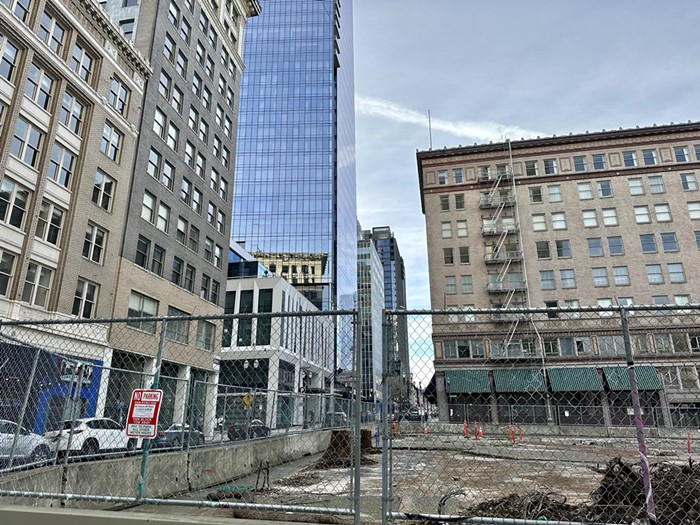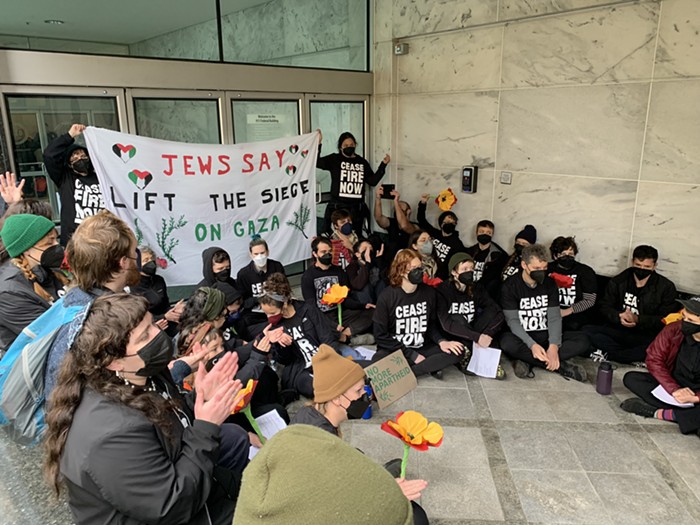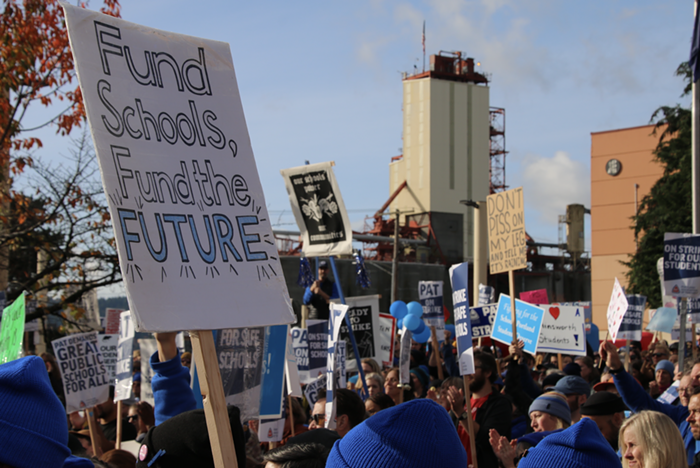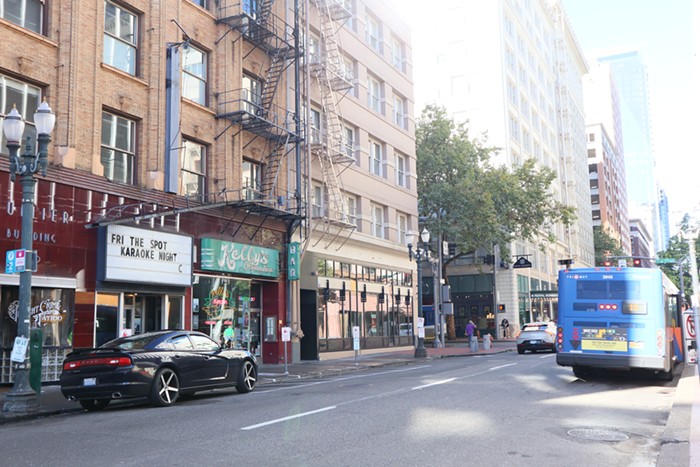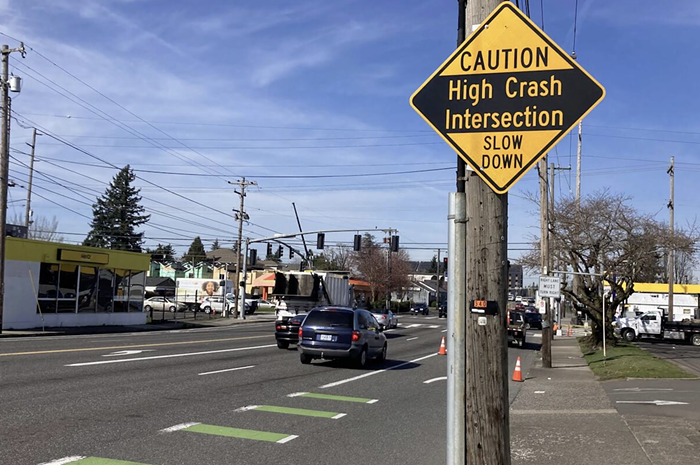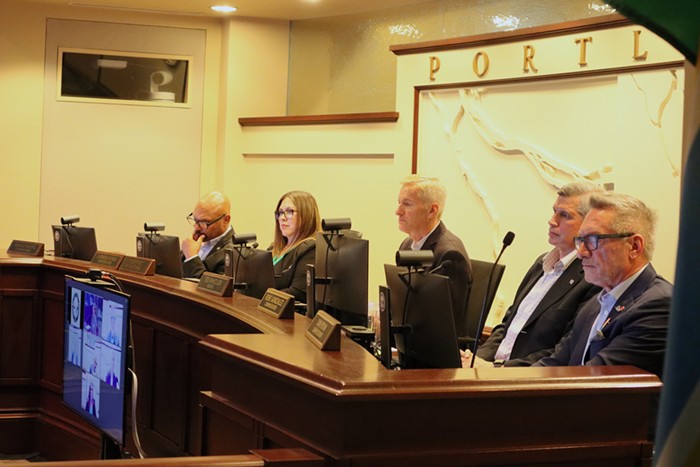The question of whether the city's water, sewer and stormwater utilities are mistreated is endlessly complex—far more nuanced than the talking points you're likely to hear as a vote on the management of the utilities draws closer.
Those will include the city's bad decision to build a Water House with utility money, and the fact that rates have shot up — 73 percent for water bills, 79 percent for wastewater—in the last decade. Not that those things shouldn't be considered. It's just they're not the only things.
Which is a long way of saying: If you've got a little time to burn and an urge to better understand the issues surrounding this debate, you could do worse than to read the report just released by a City Club of Portland committee.
Over the course of six months, the 16-person committee says it reviewed "volumes" of material and interviewed 31 sources. And after all that—beyond forming a cogent, helpful summary of where Portland's public utilities stand—it came up with some firm conclusions.
Among them:
•The proposed Portland Public Water District up for a vote this May isn't the answer.
The measure would create a new seven-member board to assume control of the Portland Water Bureau and Bureau of Environmental Services. That board would remove cronyism from the rate-setting process, advocates claim, and ease the strain on consumers. But the City Club committee says that's probably not the case.
"While the proponents appear to believe that a new governing entity independent of the City will be able to lower rates, your committee sees nothing in the measure that will guarantee that," the report reads. "Rates will continue to be subject to upward pressure regardless of the utilities’ governance structure"
That's because the big jumps in rates have been primarily dictated by unfunded federal mandates like the Big Pipe project that keeps sewage out of the Willamette River and Columbia Slough. Exasperating expenditures like the Water House play a role, too, but it's vastly smaller, the committee says.
Certainly the cost of projects such as the Water House has had an effect on customers’ bills. And your committee questions whether the full scope of the misuse of funds has come to light. But the non-mission-critical expenses identified in the past few years are small in comparison to the price tag of massive projects such as the Big Pipe and LT2 (the so-called Long Term 2 requirements forcing the city to cover its open drinking water reservoirs) compliance. The Big Pipe project by itself cost more than $1 billion, and the cost of building covered reservoirs will run into the hundreds of millions of dollars. These are among the major drivers of rate increases.
A Multnomah County judge is expected to rule in the near future whether certain projects partly funded with ratepayer money were inappropriate. A 2011 civil suit against the city has asked that money be paid back.
•And Portland's sewer and water systems are old. Like the city's streetscape, we're probably not replacing the pipes below it at a fast enough clip. But those projects cost money, which necessitates debts that we—the ratepayers—have to pay off over time. And so the rates have risen, and they're anticipated to continue to rise.
•Importantly, though, the committee also found Portland's rates aren't as wildly divergent as some would suggest. The report notes "a recent independent survey of combined water and wastewater rates for both residential and commercial customers shows that Portland's rates are generally comparable to those in other large cities on the West Coast." (Edit, 10 am, Friday: It should be noted this survey actually found Portland's combined sewer and water bills were well above the national average for big cities. This, again, is largely due to the city's sewer/stormwater rates, which shot up because of the Big Pipe.)
Update, 11:30 am: The Oregonian reports the City Club report has backed off on this assertion somewhat.
•But the committee, like the Portland Business Alliance recently, says the status quo is due for a change. Portland's water and sewer rates have theoretically no upper limit—unlike the property taxes that help fill city coffers in fat times and leave us scrounging in the lean—and so are prone to potential abuse as city leaders look for money, the report says.
So the committee recommended the city establish a "Portland Water and Sewer Authority," a body of experts that's answerable to council, but which has final say on how the water and sewer bureaus spend their budgets. City Council would still have power to approve or reject utilities' budgets, and a city commissioner would be charged with appointing members of the new authority. But individual line items would be up to the group, not council.
"City Council members may advocate for particular projects during the budget setting process and before the Authority submits a budget for approval," the report says. "The Authority will be responsible for determining whether each such proposed project meets the stated criteria for delivery of utility services."
It's a different solution than that offered by the PBA, which suggested the formation of a "municipal corporation" in which all five city council members have equal control of the utilities.
The report was released to reporters on Thursday, with the understanding nothing would be published until Friday (a pretty standard ask from the City Club when it releases these things). But the Portland Tribune mistakenly published a story about the findings online briefly on Thursday. It was the only account of the report Kent Craford, a chief proponent of the new water district on the May ballot, had seen (his group, Portlanders for Water Reform, refused to be interviewed by the City Club committee).
Craford didn't want to talk about the report without reading it himself, but did critique the new "water and sewer authority" it proposed. To undertand his comments, you need to know the committee was chaired by Chris Liddle, a manager at Portland General Electric, and that former Mayor Sam Adams is now the City Club's executive director (though the group makes a point of noting he does not influence its research).
"You've got a committee of city contractors, chaired by a monopoly utility executive, staffed by a former mayor, recommending a committee of City Hall appointees oversee our water and sewer bureaus," says Craford. "That to me is not a recipe for reform. I appreciate that they're acknowledging the problems, but establishing a PDC (Portland Development Commission) for water and sewer—that doesn't address the issues."
You can find a list of all the committee's conclusions after the jump.
•Portland’s recent rate increases are apparently commensurate with those experienced in other cities.
•Pressure for significant rate increases will continue in Portland and elsewhere, due to aging infrastructure, the costs of compliance with clean water laws and other statutes and regulations, and declining water use.
•Portland will face additional upward pressure on water rates as suburban municipalities terminate their wholesale contracts with PWB (Portland Water Bureau).
•Limits on increasing property taxes create pressure to use ratepayer funds for purposes other than providing water and sewer services.
•Portland’s charter prohibits using ratepayer funds for purposes other than water and sewer services.
•Portland ratepayer funds have been spent for projects unrelated to water and sewer services.
•Those projects have not been the major driver of recent rate increases.
•There are no criteria in place to draw clear distinctions between expenditures that are for the delivery of utility services and those that are not.
•The current budgeting and ratemaking systems do not provide adequate and efficient checks against use of ratepayer funds for non-mission-critical purposes.
•The current budgeting and ratemaking systems are at times influenced by the priorities of the commissioner(s) in charge. Those priorities are often addressed by last-minute budget amendments whose timing precludes citizen input and oversight.
•Members of PURB (Portland Utility Review Board), and the BES (Bureau of Environmental Services) and PWB BACs (Budget Advisory Committees) often lack expertise in rate setting, utility finance, engineering and other disciplines that would equip them to play an effective role in budgeting and rate setting.
•Thanks to its expertise as a utility watchdog, CUB (Citizens' Utility Board of Oregon) will add a valuable perspective to the bureaus’ planning, budgeting and ratemaking. CUB will help educate the public on issues related to water and sewer services, but CUB will not change the institutional defects identified in this report.
•Green infrastructure is widely recognized as a proper means to reduce the burden on the gray infrastructure wastewater system, and can be a means of reducing overall costs to ratepayers.
•PWB’s rate structure uses a single base charge and commodity charge for all classes of customers. This practice is inconsistent with AWWA (American Water Works Association) recommendations.
•BES does not use a base charge as part of its rates structure. This practice is inconsistent with industry standards.
•PWB and BES do not currently employ public least cost, least risk planning processes for long-term capital projects.

